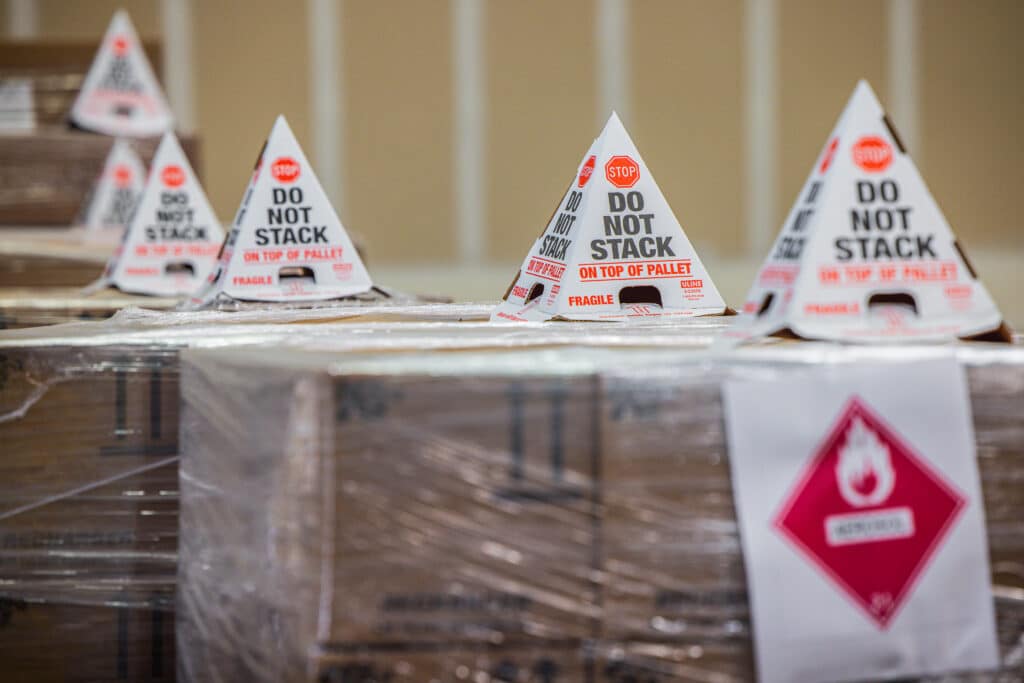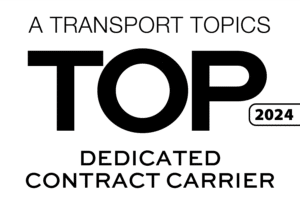
As e-commerce grows and supply chains become increasingly global, the expectations and demands of consumers also increase. With the help of technology, the logistics industry continues to evolve and shift to meet those expectations. The Internet of Things is one of those new and evolving technologies.
The Internet of Things (IoT) is shaping the way people live their lives. In the supply chain logistics industry, it’s making big changes and improvements as well—including the visibility and control of all working things.
Previously, access to the internet was limited to devices like desktop computers, cell phones, and tablets. With the Internet of Things, many other devices are able to connect to the internet and be accessed remotely.
What is the Internet of Things?
IoT is a system of interrelated devices connected to the internet to transfer and receive data from one to the other. Smart devices like refrigerators, light bulbs, cars, speakers, and more all form into a network of wirelessly connected devices.
Seamless functioning is key in IoT. Communication between devices needs to be seamless, effective, and reliable, and the use of the data received needs to be clear and used accurately. As a promising technology focused on connecting all devices with the power of the internet, IoT is expected to connect over 80 billion devices by 2025.
Technology
The technology of IoT is possible by two types of devices: general devices and sensing devices.
General devices are connected by wire or wireless interfaces and act as the main component of the data hub and information exchange. Sensing devices include sensors and actuators, which are able to measure parameters such as temperature, humidity, and light intensity.
Gateways help connect IoT general devices to the network, and the data from the sensing devices into the cloud. The cloud accesses the storage and processing unit, and action is taken based on the collected data provided.
Various industries have adopted IoT to lessen the burden on humans and provide valuable data, visibility, and control of goods.
IoT in the Logistics and Transportation Industry
Inter-vehicular networks have tremendously benefited the logistics and transportation sectors by giving remote management of vehicles and providing crucial data regarding the business. All the information gathered with IoT technologies in the fleet management business gives a competitive advantage by providing information that allows the automation of processes and provides real-time visibility to everything.
With IoT, Telematics is used to collect data directly from sensors in the trucks, giving real-time updates on vehicle performance, driver behavior, and other parameters that could affect cargo delivery. Having this information available allows businesses to make real-time precise decisions to ensure efficiency, accuracy, and safety in the delivery of goods.
Companies can manage routes and loads, update timeliness, and surpass customer expectations when they have visibility to each step of the way in supply chain logistics. Goods in most cases are not IoT-capable themselves, which requires the use of RFID markers, QR codes, or Data Matrix codes.
The track-ability of goods in transit also gives companies the ability to provide better customer service. With the usage of sensors, it is feasible to provide updates and details on the delivery of goods to the customer.
Besides the benefits of real-time updates, IoT gathers data and recognizes patterns helping the supply chain logistics work in a more efficient way moving forward and overcoming logistics challenges. From fuel efficiency to decreased emission rates, provided data helps forecasting and planning for the future, giving tools to improve the processes.
Improved Visibility
IoT vastly improves the visibility of goods, anytime and from anywhere. From the pallets to the last mile, you have access and control. This is thanks to the availability of multiple connected devices and things.
Data Capturing and Analytics
Assuring that all the data is visible and available at all stages of the supply chain is a priority in the industry. IoT gives supply chain logistics the ability to collect all siloed data to track invisibility and allow deeper data analysis. Centralized data is a powerful tool in supply chain logistics.
Data Deluge: Be prepared.
Data in supply channel logistics is a very powerful tool. IoT will be a data deluge, and it is imperative that you plan on how this data will be stored and sorted out, allowing your team to make the best use of it to improve operational methods. The amount of data will only be as good as your plans to make the most use of it.
Prioritize Security
When using IoT technology, it is important to keep security top of mind. From the devices that will connect, to the applications that will use the collected data, IoT security must be a priority ensuring the data is never compromised.
The Development of IoT Into the Future
IoT is a promising and developing technology, but it is still maturing. Acquiring and implementing the technology will have great advantages, but it will also present great risks. Managers must keep that in mind and act cautiously, always keeping an eye. It is estimated that the technology will develop into maturity in under ten years.

